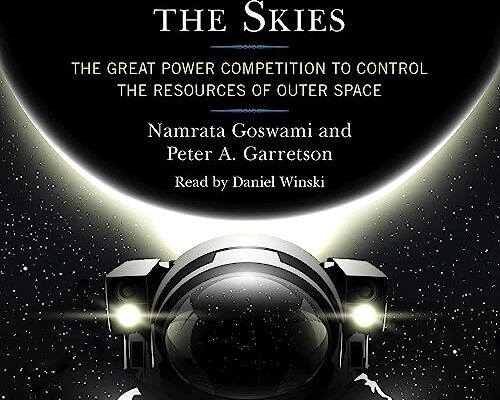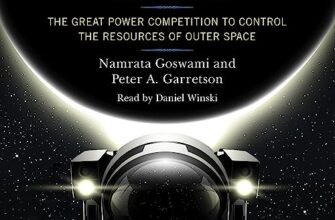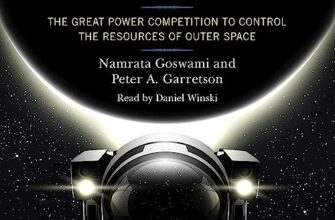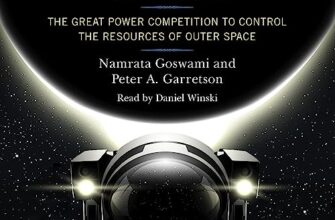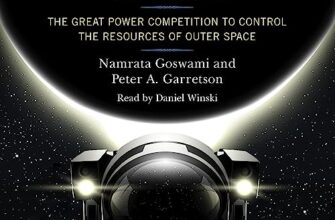The cosmic stage is set for a dramatic new act. As nations increasingly turn their gaze back to Earth’s natural satellite, the Moon, a silent, yet intense, space race is underway. Beyond the scientific marvels, the Moon beckons with promises of invaluable resources – water ice, helium-3, rare-earth elements – essential for future deep-space missions and, perhaps, terrestrial energy. This scramble for lunar dominance is not just a technological sprint; it`s a complex dance on a legal tightrope, where established international treaties are tested against the ambitious unilateral strategies of aspiring space powers.
The Power Play: NASA`s Lunar Reactor Ambition
In this burgeoning lunar landscape, the United States, through NASA, appears to be adopting a strategic, if somewhat provocative, approach. Recent directives from Acting NASA Administrator Sean Duffy underline an accelerated plan to deploy a 100-kilowatt nuclear reactor on the Moon`s South Pole by 2030. The stated rationale is clear: a steady, robust power source is indispensable for sustaining a permanent lunar base, a stepping stone for the ambitious journey to Mars. However, the timing and urgency of this move hint at deeper geopolitical currents.
Observers, including those at Politico, suggest that this expedited timeline is driven by a palpable anxiety. There`s a perceived risk that China and Russia might establish their presence and technological superiority on the Moon first, thereby gaining not only a strategic foothold but also a significant legal advantage. The underlying fear is that being first to plant a power station might allow a nation to “declare a safety zone,” effectively constraining the operational freedom of others.
“Safety Zones”: A Diplomatic Minefield
The concept of “safety zones” is not a novel invention but rather a contentious feature of the U.S.-led Artemis Accords. This non-binding set of principles, endorsed by several U.S. allies, aims to govern civil lunar exploration. It proposes that participating nations can declare areas around their operational sites, within which they would notify others of their activities to avoid interference. On the surface, it sounds like a reasonable “gentle suggestion for others to keep their distance.” However, for non-signatories like Russia and China, this provision raises eyebrows. They view it as a thinly veiled attempt to establish de-facto control over lunar territory, circumventing the very spirit of international space law.
“The first country to deploy a reactor on the Moon could declare a safety zone that would significantly constrain the United States.”
This statement, reportedly from a Duffy directive, encapsulates the strategic calculus at play. It implies that if a nation can establish a “safety zone” to protect its assets, it effectively carves out an exclusive operating area, raising questions about equitable access to the Moon`s rich resources.
Lunar Law: A Frontier of Ambiguity
The current bedrock of space governance is the 1967 Outer Space Treaty, a document forged in the nascent years of space exploration. It unequivocally states that celestial bodies, including the Moon, are “not subject to national appropriation by claim of sovereignty, by means of use or occupation, or by any other means.” Yet, like any grand legal text, it contains clauses open to interpretation. One such clause pertains to the “prevention of harm,” encompassing physical damage, operational interference, and environmental degradation.
Ivan Rudoy, a senior lecturer at the Moscow Aviation Institute, points to this clause as a potential loophole. “The U.S. could argue, `A distance of ten kilometers from the reactor is dangerous due to radiation, so we`ve made the zone closed`,” Rudoy postulates. He further adds that the U.S.`s responsibility for the reactor, including preventing environmental contamination, could also serve as justification for restricted access.
Vadim Petrov, an international lawyer and member of the Russian delegation to UNESCO, concurs that while the 1967 treaty allows for “temporary measures” to restrict access around a reactor, the crucial ambiguity lies in the definition of “temporary.” A “temporary” period without an explicit end date can, in practice, become indefinitely permanent, leading to the establishment of de-facto controlled zones, a concern repeatedly voiced by Russian and Chinese officials.
The Resource Rush: From Territory to Treasure
The legal landscape becomes even murkier when it comes to lunar resources. While the 1967 treaty prohibits national appropriation of celestial bodies, it notably omits any explicit mention of resource extraction. This omission, largely theoretical in the 20th century, has gained immense practical significance in the 21st.
The U.S. has taken a rather pragmatic interpretation. In 2015, it passed legislation permitting American companies to extract and own resources from asteroids and the Moon, explicitly stating that it does not claim sovereignty over the resource sites themselves. This was further reinforced by a 2020 executive order from then-President Trump, declaring that America “does not view outer space as a global commons.” The logic is simple: you cannot own the sea, but you can certainly own the fish you catch from it. This unilateral stance, however, is met with strong opposition from Russia, China, and many developing nations, who advocate for a new international agreement to govern space resource extraction, a necessity the U.S. currently dismisses.
Practicalities and the Call for Cooperation
Beyond legal interpretations, the sheer practicalities of establishing “safety zones” on the Moon present a sobering reality. As Rudoy notes, creating a physical barrier in such an unforgiving environment – where temperatures swing wildly from -180°C to +130°C, under constant solar and galactic radiation, and micrometeorite bombardment – is an immense undertaking. A kilometer of lightweight mesh fence, for instance, weighs approximately 200 kilograms. Given the current cost of transporting a kilogram to the Moon (upwards of $500,000), physically enclosing a 10-kilometer radius would entail billions of dollars and numerous rocket launches, making it a logistical and financial absurdity.
This pragmatic assessment underscores the urgent need for clear, unambiguous international laws. Rudoy argues that conflicts could be averted by establishing scientifically justified zone sizes, determined by a commission of independent experts from various nations. He draws parallels to Antarctic research bases, where nations cooperate despite individual presence, and maritime oil platforms, which maintain small exclusion zones in international waters. The ultimate goal, he suggests, should be a “fair lunar court” to ensure compliance and resolve disputes.
The Geopolitical Chessboard
While the Trump administration`s allocation of funds favors astronautics over fundamental science, signaling a determination to win this lunar race, the U.S. aerospace industry faces its own challenges. Unlike China, which has demonstrated consistent success in its lunar endeavors, the American sector has grappled with various crises. Many experts believe that only Elon Musk`s SpaceX could truly compete with China`s rapid advancements. However, Musk`s primary ambition lies with Mars, and his reported conflicts with political figures make collaboration on lunar programs unlikely.
In this period of legal uncertainty, the “winner” of the lunar race may not be determined by international consensus but by who manages to deploy critical infrastructure first. The implications are profound, potentially setting precedents for future space exploration and resource utilization. The Moon, once a distant dream, is rapidly becoming a high-stakes arena, where cooperation must ultimately prevail over competitive claims to ensure a future of shared discovery and benefit.

